
Features
Applications
Beef
Dairy
Equipment
Tractors
Check it out: Four more things you might have missed at Manure Expo
September 27, 2021 by Bree Rody
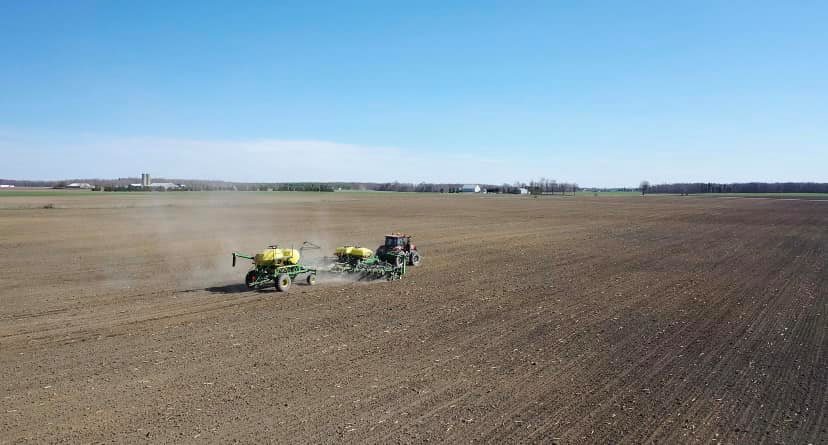
If you still haven’t gotten through all the content from the 2021 North American Manure Expo (NAME), we can’t blame you. The online event had several dozen tours, education sessions, product demonstrations, panels and more. That’s why we’ve gathered four of our favourite quotes and tidbits from this year’s Expo.
If you want to expand on these quotes and tidbits, you can check out the NAME online portal – registrants can view any of the pieces of content between now and Dec. 31!
On the differences in manure
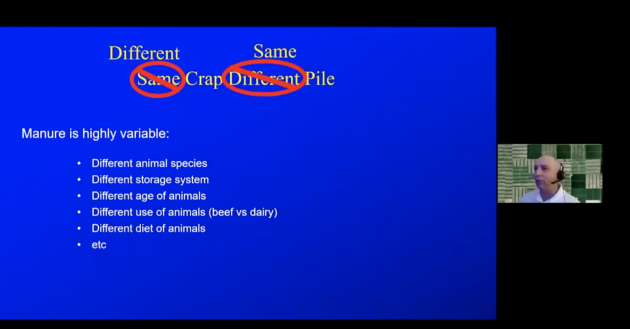
“If you like, there’s this term I’ve often heard: ‘Same crap, different pile.’ I really don’t like that one. ‘Crap’ is highly variable. In fact, often in the same pile, manure is variable enough that there’s differences within the pile. You’ve got different crap, same pile. Manure is highly variable. It’s variable based on animal species, storage systems, the age of the animal, different uses of the animal – for instance, we’ve got beef and dairy, we could be looking at broilers versus egg producers. We’re looking at different number of possibilities that change the nature of the manure that comes out the back end. And it’s also variable based on the diet. You’ve got variability from farm to farm based on the feed that they choose to use. The only way to really know is to get that manure tested.”
— Dr. John Lauzon
Education session: Black gold: Maximizing manure nutrient utilization
On knowing your vehicle dimensions
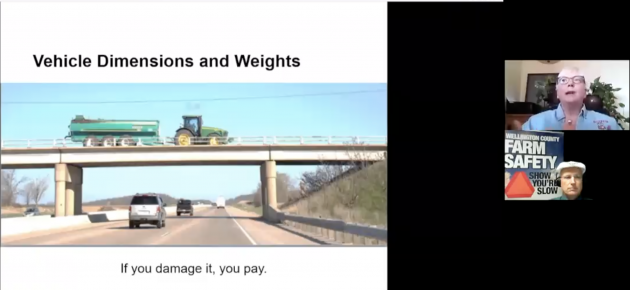
“Wisconsin did a road study from back from October 2012 through 2015, updated after 57 years, and as we looked at vehicles’ dimensions and weight, we have a lot of different requirements that a lot of places might have, but just because there’s not a width restriction on agriculture vehicles, doesn’t mean those IOH’s don’t have to apply those rules of the roads here. Know those dimensions. There’s going to be parts of roads and your routes that are going to be limiting factors. A lot of times if there’s a posted bridge, that posted bridge weight limit still applies. If you damage it, you pay for it, and in Wisconsin, damages can be assessed to three times the cost of repairing, and getting a new bridge can be pretty costly. So know those dimensions and weights.
— Cheryl Skjolaas
Education session: Safe travels:From agitation to application in the field, what you need to know about transporting manure safely
On the proper process for sewage biosolids
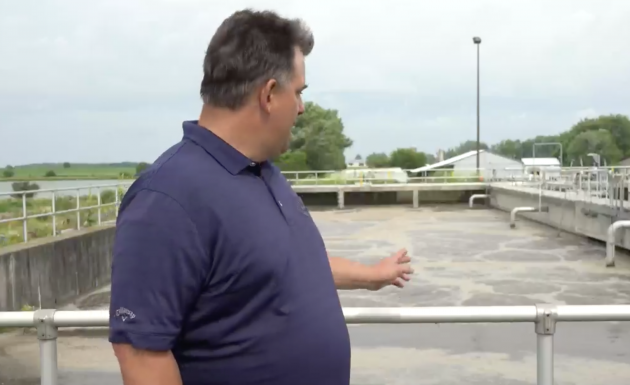
“Before water is returned to the river, we need to sample for total suspended solids, total phosphorus, ammonia [and] E.coli, among other things, to ensure we’re meeting our ECA requirements by the ministry to dump water back into the river. Once the wastewater passes through our inlets facility, it flows by gravity into our aeration and anoxic zones. In North Perth we have what is called a biological nutrient removal system, [consisting] of an anoxic tank and an aeration tank. What happens is microorganisms remove nitrogen and phosphorus from the wastewater. Once the wastewater goes through the aeration process, flow flows into our round, circular clarifiers. This is basically the starts of the biosolids process.”
— Scott Brooks
Tour: From flush to field
On modifications for road safety
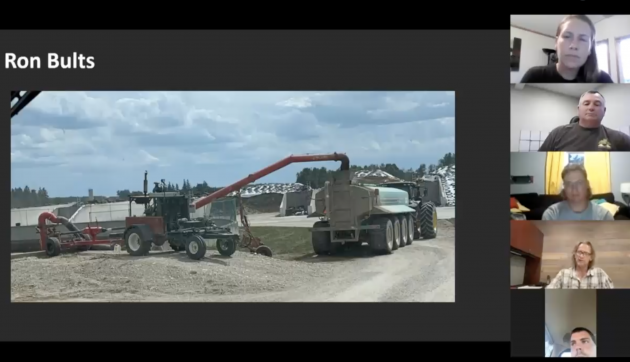
“The biggest thing that I run into is guys passing us. It seems like every time we go on a road, somebody passes us and creates a decision that is within one to two seconds of fatality hitting oncoming traffic. We really enjoyed 2020, when COVID came out in the spring. No one was on the roads. It was a real luxury. But 2021 seems to make up for it – patience and passing in really dangerous times. ”
— Larry Bearinger
“You’re working with Mother Nature and you’re working with the road, trying to get work done. And sure, they have no patience, but it’s not taught. Farmers are just in the way. They don’t respect us at all, and they think they’re going to win, but I guarantee they won’t win. The biggest reason I’ve gone to the 1400s [tires], we’ve had a couple accidents getting rear-ended, going down the road with these tanks. We put a light bar on the bottom, we’ve got tail lights… we’ve got more lights on these things on the back, but these guys show up and don’t know what to do. So we upgraded to the 1400s to try and stay on the pavement, to create less dust. Just trying to keep the road safer.”
— Ron Bults
Panel: Featuring modifications to purchased equipment to enhance performance